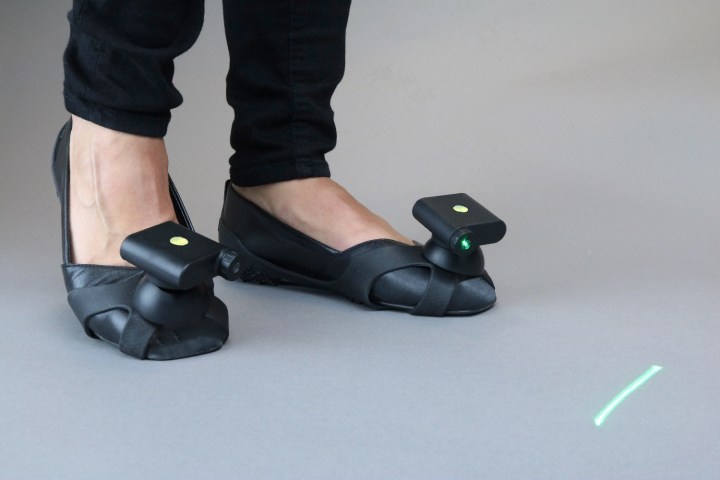
At the Netherland’s University of Twente, researchers have been working with a pair of laser shoes designed to deal with exactly this scenario. The shoes use a laser projection device that is mounted on the toe, which generates a straight line that follows around 18 inches ahead of its wearer. This line helps guide wearers forward, so that they no longer feel as if their feet are glued to the floor.
“In our study recently published in Neurology, we found that in the lab, laser shoes were able to reduce by half the frequency and duration of freezing episodes,” researcher Murielle Ferraye told Digital Trends. “That laser shoes work by providing a rhythmic and spatial target for patients to step towards can help Parkinson’s disease patients walk again may seem surprising. However, this increased receptivity of Parkinson patients to visual information [has been] known for decades, and is inherent to the disease itself. Parkinson’s disease indeed affects automatic movements. Patients may compensate for this lack of automaticity by paying more attention to their movements. In this context, external cues help them focus on their stepping movements, hereby bypassing the disrupted automatic circuit in the brain and shifting to a more conscious way of walking.”
The laser is operated by a pressure-sensitive switch under the sole of the shoe. It turns off when a person’s foot is lifted, and back on when they place their foot back down. The laser is oriented to project its beam orthogonally, in front of the patient’s opposite foot that is about to be lifted. The laser line acts as a visual cue and is tuned exactly to the stepping frequency of the patients, thereby making it a closed-loop system.
At present, such a device isn’t publicly available in the U.S. as far as we are aware. However, in Europe and Turkey, the company Walk With Path manufactures a shoe attachment called Path Finder which works in this way by projecting a laser line in front of wearers’ feet for each step they take. “Path Finder is [currently] available directly on our website for users based in the European Economic Area, Switzerland and Turkey,” company founder Lise Pape told Digital Trends. “We are working on making it available in the U.S., Australia, and Canada in the near future.”
Editors' Recommendations
- The meat industry could spawn the next pandemic, new report finds
- Brain-stimulating implant can turn down Parkinson’s symptoms as required
- Uber may be banned in London. Could the same thing happen in the U.S.?


